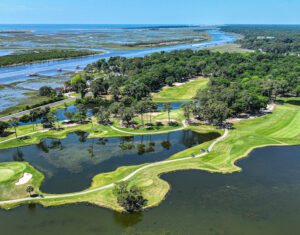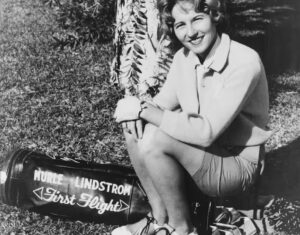Lion’s Paw Continues to Roar at Ocean Ridge Plantation
 The Willard Byrd/Tim Cate design, which stretches 7,003 yards from its blue, championship, tees was well received from the moment it opened, setting the stage for Ocean Ridge to grow into a four-course facility that is a hub for many Myrtle Beach golf trips.
The Willard Byrd/Tim Cate design, which stretches 7,003 yards from its blue, championship, tees was well received from the moment it opened, setting the stage for Ocean Ridge to grow into a four-course facility that is a hub for many Myrtle Beach golf trips.
Lion’s Paw also introduced Tim Cate, who went on to design the other three courses at Ocean Ridge, to the Myrtle Beach golf scene.
But make no mistake, Lion’s Paw is more than a layout that served as introduction to a larger development.
“It’s still one of the most popular courses on the Grand Strand,” Bill Long, Ocean Ridge’s, director of marketing, said. “Lion’s Paw built its reputation on quality and people are still coming back 20 years later.”
The course incorporates Brunswick County’s natural elements – swamp land, wetlands and native pine forests – in addition to the imaginations of Byrd and Cate, to provide players a memorable round.
The layout is a lengthy (6,457 yards from the white tees), straight-forward test. Players won’t hit the ball into a hazard that wasn’t visible off the tee and good shots won’t go unrewarded.
The fairways at Lion's Paw aren’t exceedingly wide so accuracy off the tee is at a premium.
RELATED
- Lion's Paw Continues To Roar
- Lion's Paw Photo Gallery
- Five Things You Need to Know About Lion's Paw
- The Three Best Holes at Lion's Paw
The course received new MiniVerde Bermuda grass greens last summer and during installation the greens were expanded back to their original size, though they remain relatively small by modern standards. The upshot is if you hit the green in regulation, a makeable birdie putt likely awaits.
Taken as a group, the toughest collection of holes at Lion’s Paw are its par 3s. Three of the four one-shotters require a carry over water and all are at least 175 yards from the white tees, so buckle up. The fourth par 3 – No. 17 – has a peninsula green and isn’t a pushover.
The par 4s offer a diverse set of challenges but are manageable. Lion’s Paw has only one par 4 that plays more than 400 yards from the white tees and four of the 10 play 375 yards of less.
Taking advantage of the par 5s is a necessity. The 517-yard second hole (477 from the white tees) offers an excellent chance at par or better. The 18th hole is the only one that plays longer than 500 yards from the white tees.
Water is visible on 15 holes but it’s often as much about aesthetics as it is challenge, with the aforementioned exception of the par 3s. The 79 bunkers that dot the course, many of them surrounding greens, present a much more substantial test. The bunkers at Lion’s Paw are traditional traps as opposed to the yawning waste bunkers that Cate favors on his solo designs, but are best avoided nonetheless.
The Verdict: Golfers can expect a good course and outstanding value at Lion’s Paw. The installation of the new MiniVerde greens in the summer of 2011 has insured that the course’s putting surfaces are equal to the rest of the layout. If Lion’s Paw is on your Myrtle Beach golf trip itinerary, expect a good day.
Thanks for using www.golfholiday.com for your Myrtle Beach golf course reviews!



